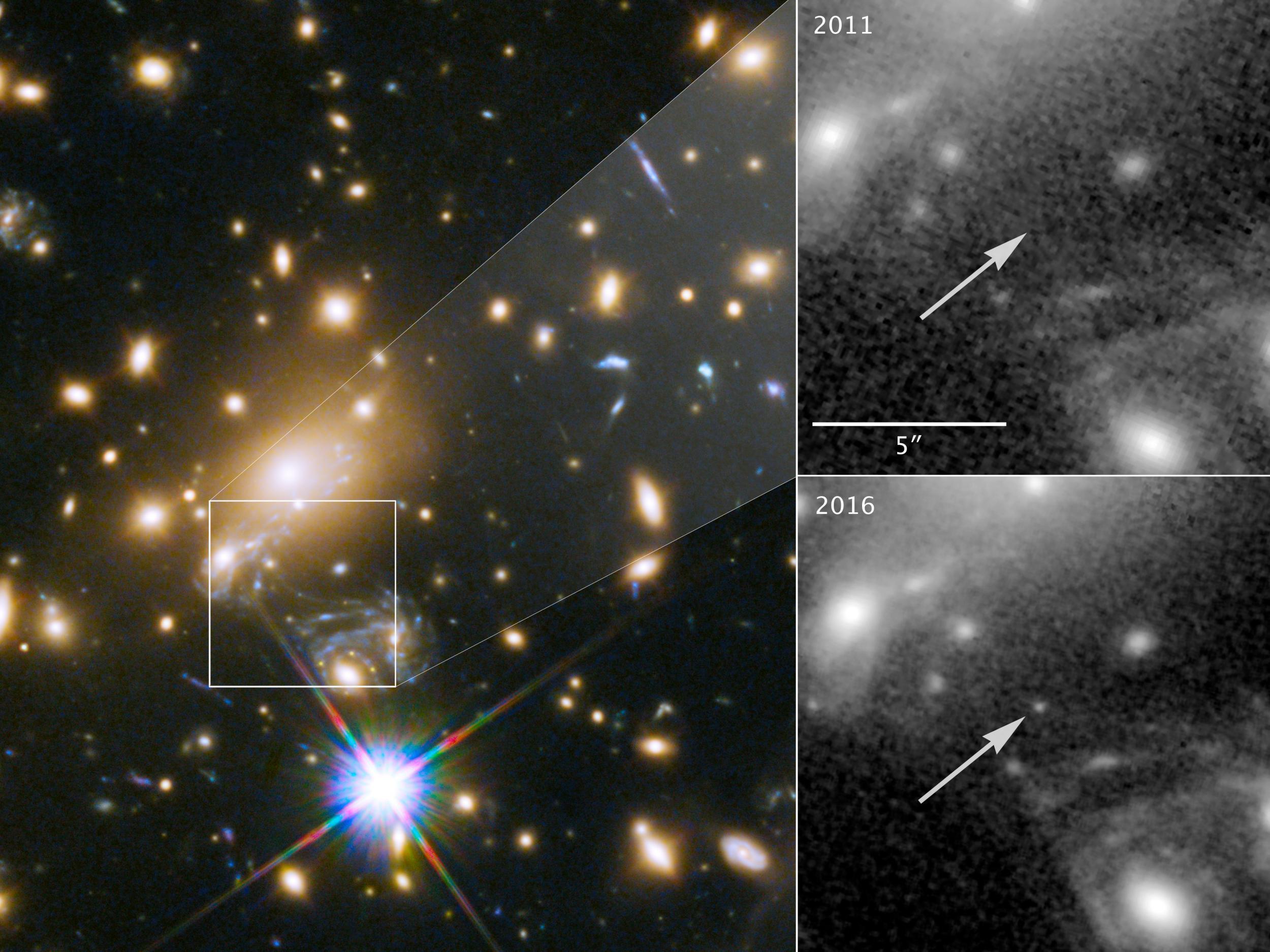Most distant star ever seen spotted by Hubble telescope 9 billion light years away
'Amazing cosmic telescope' allows scientists to see Icarus, a blue supergiant at least 100 times farther away than next visible stellar object

Your support helps us to tell the story
From reproductive rights to climate change to Big Tech, The Independent is on the ground when the story is developing. Whether it's investigating the financials of Elon Musk's pro-Trump PAC or producing our latest documentary, 'The A Word', which shines a light on the American women fighting for reproductive rights, we know how important it is to parse out the facts from the messaging.
At such a critical moment in US history, we need reporters on the ground. Your donation allows us to keep sending journalists to speak to both sides of the story.
The Independent is trusted by Americans across the entire political spectrum. And unlike many other quality news outlets, we choose not to lock Americans out of our reporting and analysis with paywalls. We believe quality journalism should be available to everyone, paid for by those who can afford it.
Your support makes all the difference.Astronomers have identified a star 9 billion light years from Earth – the farthest individual star ever seen.
Usually is it impossible to make out stars at distances greater than around 100 million light years, even using the most powerful telescopes.
This achievement was made possible due to a phenomenon known as gravitational lensing.
Previously used to locate planets far outside the Milky Way, lensing involves galaxies within astronomers’ line of sight bending rays of light and effectively magnifying objects in distant parts of the universe.
The team had been using the Hubble Space Telescope to monitor a supernova when they noticed a point of light, which they later realised was an individual star.
In this case, the gravity of a massive galaxy cluster 5 billion light years away created the lensing effect, allowing astronomers to see the object – a blue supergiant they named Icarus.
“For the first time ever we’re seeing an individual normal star – not a supernova, not a gamma ray burst, but a single stable star – at a distance of 9 billion light years,” said Professor Alex Filippenko, an astronomer at the University of California, Berkeley, and a co-author of the paper documenting this discovery.
“These lenses are amazing cosmic telescopes.”
While it is possible to view galaxies very far away – as they glow with the light of billions of stars – and supernovas due to their incredible brightness, the discovery of an isolated star at this distance is unique.
“You can see individual galaxies out there, but this star is at least 100 times farther away than the next individual star we can study,” said Dr Patrick Kelly, an astronomer at the University of Minnesota who led the study.
These findings were published in the journal Nature Astronomy.
Generally, lensing can only magnify distant objects by around 50 times, but the researchers found Icarus was magnified to a far greater degree.
The reason for this discrepancy is that on top of the initial magnification by the galaxy cluster, this star was further magnified when another individual star within that cluster happened to precisely align in front of Icarus.
This foreground star added to the overall magnification effect, boosting its brightness more than 2,000 times.
Dr Kelly and the team predict that in the coming decades Icarus will be magnified many more times, potentially as much as 10,000 times its actual brightness.
They said by using gravitational lensing it could be possible to view many more distant objects, and in doing so learn about stars in galaxies formed during the first days of the universe.
“There are alignments like this all over the place as background stars or stars in lensing galaxies move around, offering the possibility of studying very distant stars dating from the early universe, just as we have been using gravitational lensing to study distant galaxies,” said Professor Filippenko.
“For this type of research, nature has provided us with a larger telescope than we can possibly build.”
Join our commenting forum
Join thought-provoking conversations, follow other Independent readers and see their replies
7Comments